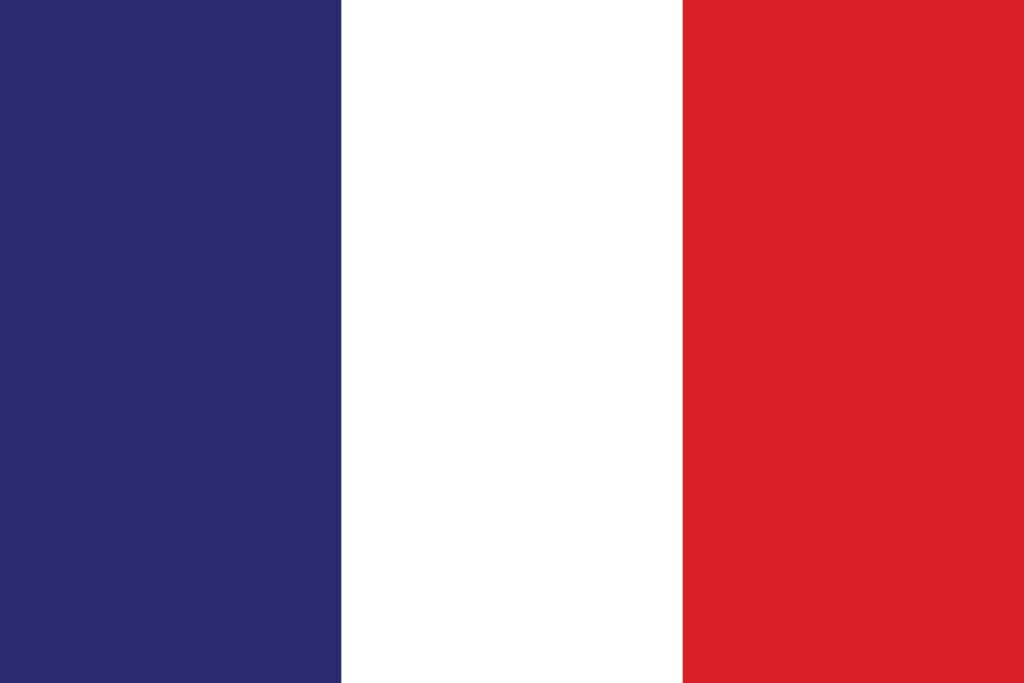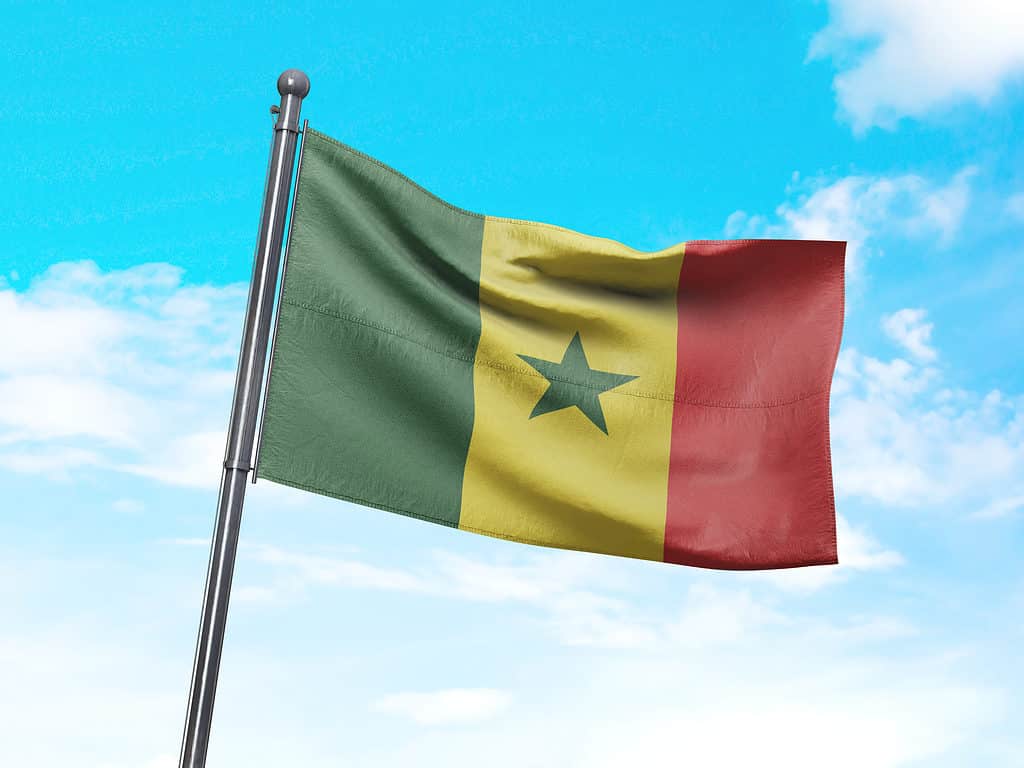Senegal, or officially the Republic of Senegal, is a West African country that gets its name from the Senegal River, which runs along its north and eastern borders. Although Senegal is today an independent country, it formerly belonged to France as a colony. For a long time, the French stopped the people of Senegal from flying their flag. Today the flag of Senegal represents the country’s fight for independence and the sacrifices that its people made.
Characteristics of Senegal
Senegal is a diverse country and has a wide mix of ethnic groups and languages. There are more than 30 languages spoken in Senegal. Wolof is the most common, as around 80% of the population speak it. However, due to its time under the French colonial rule, French is the official language – even though only a minority of people speak it.
The country itself lies next the the Atlantic Ocean. While the landscape is fairly flat it consists mainly of rolling plains and savannahs. There are two main seasons in Senegal – the wet season and the dry season. The dry season lasts from October to May, while the wet season lasts from June to September. However, the amount of rainfall differs depending on location. The forested regions in the south of the country can receive up to four times as much rainfall on average than the more arid regions.
Additionally, the temperatures are much higher inland that they are on the coast. In some places severe drought impacts the agricultural areas, which in turn causes food shortages and job insecurities. Agriculture is one of the largest industries in Senegal. Therefore, anything that affects crops also affects the country as a whole.
Founding of Senegal

The French flag was the only flag allowed in Senegal during French rule.
©Geniusbonkers/Shutterstock.com
Archaeological evidence suggests that Senegal has been occupied since prehistoric times. Eastern Senegal eventually formed part of the Ghana Empire which lasted until around 1100. In the following centuries, various empires influenced the area. These include the Jolof Empire, which ruled much of modern-day Senegal until the mid-1500’s.
By the time the mid-15th century rolled around traders from various countries were landing on Senegal’s coastline and competing against each other. However, Senegal would eventually come under French colonial rule. This French conquest began with the formation of Saint-Louis in 1659. Saint-Louis became the capital of the French colony of Senegal in 1673. Then the French took control of the nearby island of Gorée in 1677. However, it wasn’t until the 1850’s that the French began to fully expand their ruling across the country by gradually taking over the native kingdoms.
Senegal remained largely under French command until the rise of decolonization in Africa forced the French to allow it to become a republic within the French Community in November 1958. This French community consisted of a group of former French colonies – mainly those in French Africa. However, by January 1959, Senegal and French Sudan merged to become the Mali Federation. This Federation became independent in June 1960, but then broke up only a short time later in August 1960. As a result, Senegal was then able to claim full independence and become the country we know today.
History of the Flag of Senegal

The three colors of the flag of Senegal each represent important values of the native people.
©Hybrid Gfx/Shutterstock.com
The flag of Senegal is actually completely immersed in the history of the country itself. This is because the current Senegal flag has only been flown since the country gained complete independence.
The first flag in Senegal for any length of time was actually the French flag, which represented the country between 1659 and 1958. During the time the French controlled Senegal, the authorities forbade the people from using their own colonial flag, insisting that they use the French tricolor flag only. This is because the French authorities thought that if Senegal was allowed to fly its own flag, it would lead to an increase in calls for independence.
When France allowed Senegal to become a self-governing republic under the French Community, Senegal was then able to adopt a different flag. During the time that it was part of the French Community, Senegal flew the flag of French Senegal. This flag consisted of a green background with a yellow star in the center.
However, Senegal’s flag changed once again when it became part of the Mali Federation. This flag was a vertical tricolor – green, yellow, and red – with a stylized human (known as a kanaga) in the central yellow band.
The flag representing the Mali Federation was again short-lived and upon their independence Senegal changed their flag to the one that is used today. The flag of Senegal is very similar to that of the Mali Federation – keeping the same green, yellow, and red tricolour, but replacing the kanaga with green five-pointed star.
Symbolism of the Flag of Senegal
Although Senegal’s flag is relatively new it still contains a lot of important symbolism. The green, yellow, and red tricolors are the colors of the Pan-Africanist movement that represents unity amongst the African countries. However, it is also symbolic of the country’s religions and main political parties too.
Green represents the Senegalese Democratic Bloc; Yellow represents the Senegalese Popular Movement; and red stands for the Senegalese Party of Socialist Action. These three political groups are the parties that merged to form the Socialist Party of Senegal. This is the party that has ruled since Senegal’s independence in 2000.
However, the most common interpretation of the flag’s colors is that the green band and star represent Islam. This is the most popular religion in Senegal (representing approximately 94% of the population). Green has several associations with Islam, mainly because green is associated with both paradise and the Prophet.
The yellow band on the flag symbolizes wealth, which is the product of work. Both of these are important to the country’s economy, which is something that the Senegal government prioritizes.
Finally, the red band represents the color of blood. This in turn, represents both life and sacrifice, as well as the determination of the nation to fight for their freedom.
Up Next
- The Flag of Equatorial Guinea: History, Meaning, and Symbolism
- The Flag of Australia: History, Meaning, and Symbolism
- The 10 Largest Snakes in Africa
The photo featured at the top of this post is © Pavlo Lys/Shutterstock.com
Sources
- Wikipedia, Available here: https://en.wikipedia.org/wiki/Flag_of_Senegal
- Flag Makers, Available here: https://flagmakers.co.uk/media/h5mn34lz/flag-of-senegal-a-brief-history-download.pdf
- Wikipedia, Available here: https://en.wikipedia.org/wiki/French_conquest_of_Senegal
Thank you for reading! Have some feedback for us? Contact the AZ Animals editorial team.






